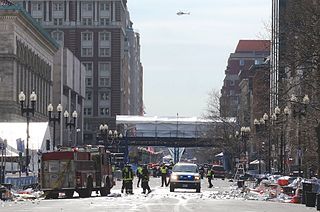Responding intelligently to emergencies
By Paul Thompson, General Manager - Government & Public Safety, Motorola Solutions
Tuesday, 28 May, 2013
Equipping emergency services with intelligence data gathered from the world around them is the way of the future.
Here’s a scenario: A thief has escaped the local petrol station after a hold-up. The CCTV camera gets footage of the masked assailant’s clothing. The footage is obtained by police headquarters, which then looks for subsequent footage on CCTVs nearby to ascertain the movements following the robbery.
A camera stationed at a nearby traffic light sees the thief in a white ute heading down a main street. That footage is obtained and both videos are sent to nearby police officers, as well as the licence plate number and an image of the ute and details of whether it was stolen.
An interactive map is sent to the police officer’s in-car vehicle monitor showing the assailant’s movements so far, with real-time updates as the situation develops and more data becomes available.
Is a scenario like this possible? Absolutely.
Technology is becoming more and more integral not only in criminal investigations, but ensuring safer cities and thriving communities more generally.
Consider these statistics for a minute. For every homicide that occurs, a city’s population declines by an average of 70 people. And for every dollar invested in public safety, five dollars come back in the form of economic development.
Equipping those on the front line with the right technology has never been more paramount, or more logical. And while nothing can currently replace the trusted two-way radio for resiliency and one-to-many communications, many complementary technologies are being adopted to provide our emergency services personnel with more intelligence when and where they need it.
Data-driven responses
Advances in technology in the public safety arena took a huge leap forward in 2012. Innovations in wireless data, data sharing and the advances in the devices that enable those applications saw public safety enter a new era. It’s an era of intelligence based on enormous amounts of data derived from the world around us.
The key to gathering that level of intelligence is ensuring our responders have the ability to capture, identify, analyse and distribute data seamlessly. Data is now created everywhere - from a person’s smartphone, CCTV cameras, posts on social networks and even texts from the public. Command centres are now evolving into complex multimedia hubs that are required to manage, analyse and interpret data to create and enhance real-time operational views of a situation.

Tragically, times of emergency are often reminders of the importance of harnessing data to boost intelligent policing.
The recent Boston Marathon bombings showed the world not only the incredible spirit of Bostonians but also the ability of humans to work together in times of disaster.
One of the first things the FBI did in the wake of the bombings was request that everyone who attended the marathon send in any images or videos they may have taken at the event before, during and after the explosion.
The response was immediate, and within hours the agency was flooded with images and videos. Users of websites such as Reddit, Twitter and 4chan analysed the photos and circulated the images on a far greater scale than would have been possible 10 years ago.
The FBI then released footage of the two suspects and asked for the public’s help in identifying them. The suspects were quickly tracked down and the surviving suspect caught.
Harvesting information
Analysis of all of this data, from thousands of sources in Boston, was the key in being able to narrow down the list of suspects to just two, and was done from a central command hub.
More agencies across the world, and even in Australia, are taking notice of intelligence and video analytics, which can lead to an agency’s systems adapting instantly to various situations. These tools let them synthesise disparate information to find previously unseen patterns. Investing in the technology to utilise all this information, therefore, has never been more critical.
Public safety agencies require mission-critical networks that can evolve to deal with increased data and information sharing, and with the extra strain they are placed under in times of emergency.
Technology can be a powerful tool when harnessed in the right way, and for emergency service responders, harvesting existing communication infrastructure and integrating devices, multimedia advances, applications and analytics into actionable forms of intelligence will help ensure safer cities and a community that is both engaged and thriving.
Wireless networks for mine management
Today's fleet management applications form the foundation for a future where driverless...
Wireless networks for mine management
Today's fleet management applications form the foundation for a future where driverless...
Interoperability for Tasmania's emergency services
Tasmanian police, fire and ambulance services can now communicate directly with each other,...



